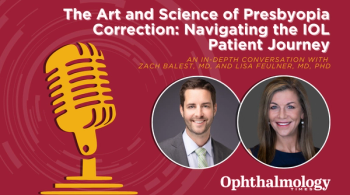
Study: Surgeon and anesthesiologist satisfaction an unreliable indicator of patient satisfaction during ocular surgery
According to Boston Medical Center investigators, providers and patients often disagree on what defines adequate sedation and comfort during surgery.
Research from a team of investigators from Boston Medical Center suggests that providers are poor predictors of patient satisfaction with anesthesia and perioperative comfort.
According to the study, investigatorsfound that only a low-level association was demonstrated between a patient and provider’s satisfaction with anesthesia, even when individual measures of patient satisfaction such as pain and anxiety were isolated.
Boston Medical Center (BMC) noted in a news release that conscious anesthesia during ocular surgery is a common practice used to ease pain, discomfort and anxiety. However, there is a varying level of satisfaction among providers and patients about the effectiveness and purpose of anesthesia. Currently, there is no standard for the type or amount of anesthesia administered to a patient, so it is dependent on the setting, patient, and provider to make any judgements.
“If provider assessment is not reflective of patient comfort, patients may not be receiving adequate sedation throughout their procedures,” Hyunjoo Lee, MD, PhD, an ophthalmologist at Boston Medical Center, noted in the news release. “This could lead to lower patient satisfaction.”
The BMC news release noted that patient satisfaction is considered to be difficult to assess intraoperatively, as patients are completely draped and communication is somewhat limited. Surrogate measures including movement and increased heart rate, in addition to patients reporting pain and anxiety, are often used clinically to determine the appropriate level of sedation during ocular surgery.
However, investigators also pointed out that there is no evidence showing that these measures accurately predict patient satisfaction. Provider judgment and satisfaction with anesthesia intraoperatively often determines the initial dose of sedation, as well as the need for additional anesthesia throughout the procedure.
“This poor correlation may suggest differing expectations pertaining to quality care,” Lee, also an assistant professor of ophthalmology at Boston University School of Medicine, noted in the news release. “For instance, surgeons may value a quiet patient with minimal eye movement during surgery, whereas a patient may value being pain-free or a complete lack of awareness of the surgery. Alternatively, an overly sedated patient might exhibit excessive eye movement, lowering surgeon satisfaction, or unstable vital signs, lowering anesthesia provider satisfaction. Ultimately, the goal should be to maximize patient satisfaction without compromising patient safety.”
According to BMC, investigators analyzed 283 ophthalmic surgical cases with patients whom speak English, Spanish or Haitian Creole. The patients were sedated with benzodiazepine prior to the start of surgery and then were given supplemental anesthesia throughout the surgery, as needed. After surgery, the patients, surgeons and anesthesiologist were all given surveys to assess their level of satisfaction. The correlation of patient to surgeon satisfaction was 0.333 on a scale of 0 to 1, indicating a moderately weak correlation.
BMC noted in its release that investigators recommend that future research focus on better understanding patient satisfaction with anesthesia during ocular surgery.
The news release noted that funding for this study was in part supported by the Boston University Clinical and Translational Science Institute, grant number 1UL1-TR001430.
Newsletter
Don’t miss out—get Ophthalmology Times updates on the latest clinical advancements and expert interviews, straight to your inbox.


















































.png)


